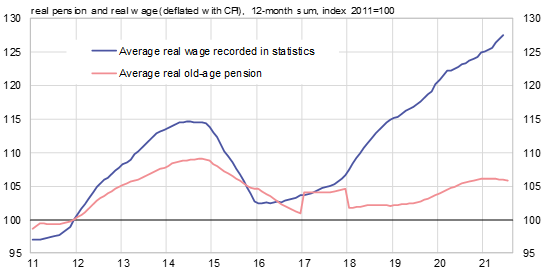BOFIT Weekly Review 35/2021
Russian pensioners and select public sector workers receive notable one-time stimulus payments this month
On August 24, president Vladimir Putin decreed a one-time stimulus payment to pensioners in the amount of 10,00o rubles (115 euros). He proposed the payments just two days earlier at his meeting with representatives of the Duma’s majority party, United Russia. On August 31, Putin decreed a one-time payment of 15,000 rubles to be paid in September to select federal officials such as interior ministry employees, customs workers, prosecutors, as well as contracted military and trainers. The decisions came with the approaching Duma election on September 19. In the 2016 Duma election, the announcement of a one-time payment to pensions also came down a couple of weeks before the election. At that time, the payments were sent out at the end of the year. Approximately 43 million pensioners receive the one-time payments now and they constitute about 40 % of all eligible voters. The one-time payment corresponds to 63 % of the current average monthly old-age pension.
The funding needed to make the instructed one-time payment to pensioners represents over 0.4 % of Russia’s annual GDP and close to one per cent of annual household consumption. All, or at least most, of the payments in the near term will temporarily boost private consumption. Russian pensioners on average have a lower savings rate than the population generally whose savings rate for bank deposits and cash on hand in recent years has also been fairly low (5−7 %). The money supports domestic production and imports to some extent via consumption. Their real volumes will temporarily increase to the degree that spending the payments does not affect inflation.
The hikes in real pensions in the 2000s coincided with elections and stimulus efforts during the 2009 recession. In the 2010s, the government was much less generous with pension hikes. Ahead of the 2016 Duma election, the government relied exclusively on the one-time payments. At that time, surveys showed that those in power already enjoyed high popularity in the wake of the illegal annexation of Crimea in early 2014, which lasted until June 2018 when the then prime minister Dmitri Medvedev announced a gradual increase in the general pension age and higher value-added tax rate.
Government leaders have paid public attention to the social situation of pensioners in connection with pension hikes starting in the mid-2000s during the economic boom. The ratio of the average old-age pension to the average real wage declined to its low point in 2007 at 23 %, when the ratio to the average wage of public sector employees paid from government budgets also decreased (to 26 % in 2007). The ratios then increased significantly with pension hikes by 2010 to 36 % and 39 %. The ratios have since fallen. In recent years, both ratios have been around 30 %.
The real average pension in Russia has increased slowly over the past decade

Sources: Rosstat and BOFIT.